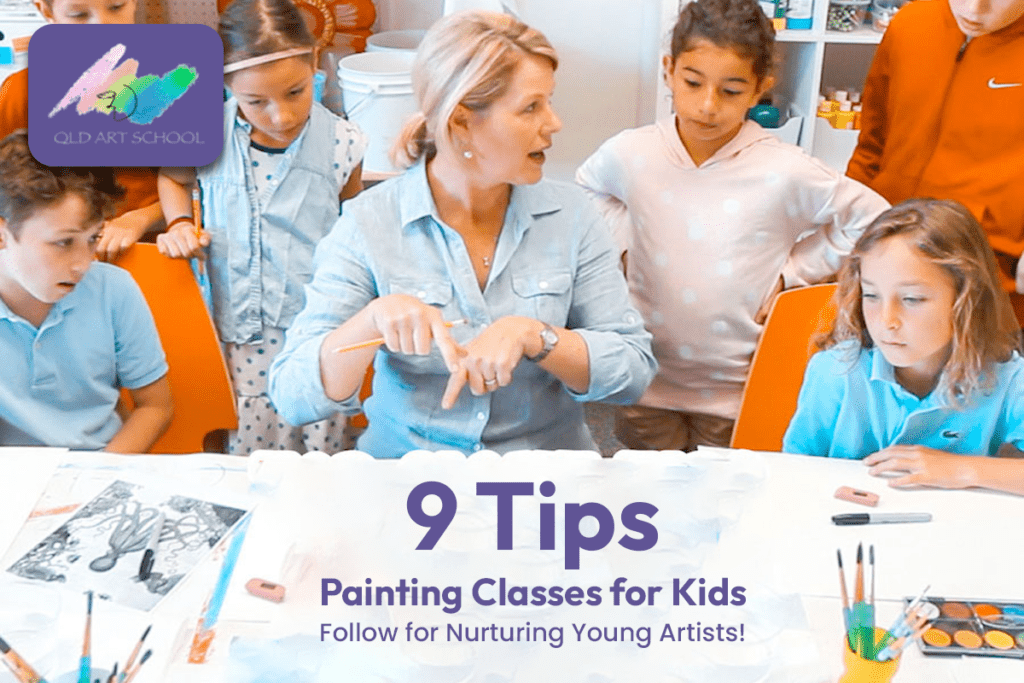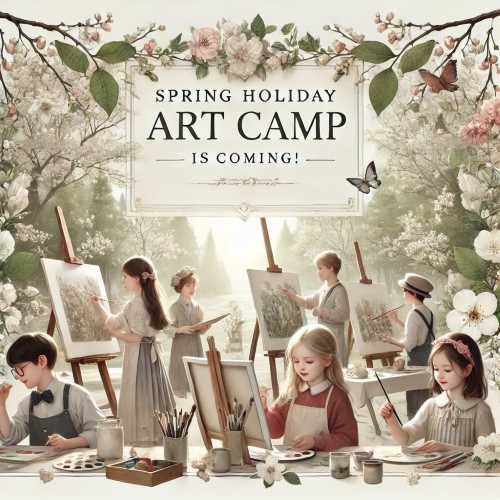
Painting classes organized by the best instructors can create a captivating path for imaginative young minds, where they can explore their artistic potential by being a part of colourful world. Beyond enhancing their imaginative quotient, painting classes for kids also ignite self-expression, problem-solving, emotional intelligence, etc. However, this blog will give you an insight into the tricks art instructors follow to teach artwork to kids. Keep on reading.
Present Relevant Samples
Teachers offering a painting class for kids, get started by showcasing simple art samples to the little learners. Most of the time, they prefer starting with beginner-friendly acrylics. Gradually kids get introduced to other tools like a colour palette and mixing chart to aid their progress.
The main principle behind the sample show is to encourage students to work on the same project encouraging their creativity at the same time.
Appreciate Good Works
Appreciation works as a powerful tool for every little artist. So, art schools ensure the right strategies to give them a feeling of acknowledgment. Rewarding deserving students is also another effective way to keep them motivated.
Besides appreciation, art teachers should focus on giving effective guidelines and small rewards that will be helpful for mediocre or new students.
Teachers Don’t Get Bored of Reteaching
Learning capacity varies from one to another, and every teacher should ensure students are learning the art properly. Keeping that in mind teachers of a good painting class come with a composed attitude and assure students get a good grip on the subject.
It’s true for classroom expectations as well. Teachers make sure to remind all rules proactively so kids can follow them with ease.
Follow a Stepwise Learning Process
Unleashing the hidden artistic talent in little ones is indeed a magical experience and to explore it, teachers follow a stepwise process. Organized and stepwise learning allows children to grasp every phase of painting, from brush strokes to colour blending, making it easy for them to create mesmerizing tones. Embracing this teaching technique ensures unlocking budding young artists most effectively.
Introduce Art Vocabulary
Introducing fundamental art terms to students often gets overlooked by many art teachers. But for wholesome learning, teachers offering a painting class for kids should focus on it. Teachers start to make students to this vocabulary considering the age group.
For example- when it comes to kindergarteners, delving into the seven elements of art, such as shapes and lines, is paramount. And for learners between 7 to 10, skipping some basics won’t create a big deal.
Proper Class Structuring Matters
Supplies have a crucial role to play over there. To avoid any confusion, teachers should make sure how students will get access to them. Two options are available over there. Many painting classes for kids create adorable supply kits for the little ones or prepare a handy supply list for them to purchase.
And the prepared art instructors often carry the essential tools like a lightbox, and captivating reference images to offer a smooth learning journey to the learners.
Create Friendly Relationships with Kids
Teacher-student relationship has a big role to play in every learning journey and the scenario is the same when your kids learn to paint. It helps them embrace challenges and rectify mistakes as stepping stones to improvement. Instead of dwelling on errors, they learn to see them as opportunities for growth and experimentation when kids share a positive relationship with teachers.
So, Teachers of a painting class for kids are supposed to come with a positive and encouraging attitude that would boost the confidence level of learners and keep them motivated.
Follow Simple Teaching Methods
Kids have a short attention span and due to this reason, they got attracted to simple yet engaging teaching techniques. Art instructors should keep an eye on it and assure to embrace easy, interactive, and engaging teaching methods that would attract young learners.
Incorporating colourful visuals, hands-on activities, and storytelling can boost the kids’ imaginative power effectively. Often teachers break down complex concepts into digestible chunks, making learning enjoyable and accessible. Games, group activities, and incorporating technology can also add excitement and allow kids to go through an enjoyable learning journey.
Freedom is Important
Being a creative work, artworks need freedom, and teachers should focus on it. Arts instructors should help in igniting the imagination power of kids by focusing on it. Considering this, skilled teachers offering kids drawing classes encourage them to present the hidden artist with a unique creative quotient in each learner.
Teachers should educate young learners to give basic ideas about the different painting supplies available. After that, they should be given the freedom of doing experimentation that will boost their confidence.
Final Lines
In conclusion, while we have explored common tactics art instructors implement in painting classes, it’s crucial to remember one thing. There are no fixed rules or rigid boundaries in this vibrant world. Teachers should embrace the right teaching methods to encourage the child’s unique artistic journey. By creating a supportive and imaginative environment, teachers ignite the spark of creativity that will guide these young artists on an outstanding artistic journey.



